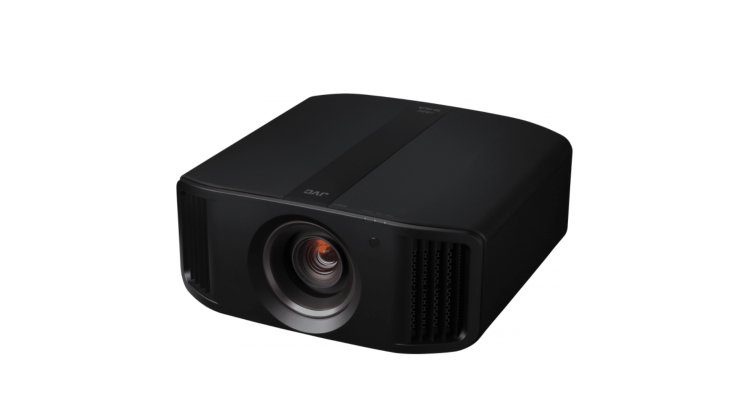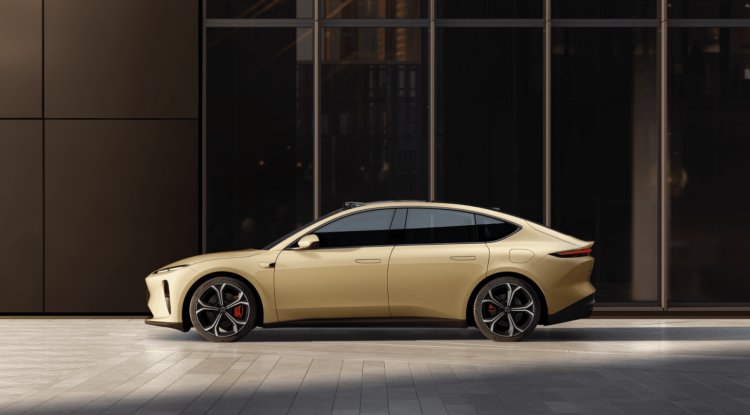JVC DLA-NP5: 4K/120Hz HDR projector with lamp

JVC Kenwood has completed its entirely revamped NZ series with the launching of the JVC DLA-NP5. The fourth and smallest model has a unique feature: whereas the "NZ" siblings employ a laser/phosphor hybrid as the light source.
The special features of the JVC DLA-NP5
Otherwise, the housing has all of the significant advancements of the current projector generation. On the one hand, there is signal processing with full HDMI 2.1 bandwidth up to 48GHz. On the other hand, there is enough computer capacity here to perform real-time image analysis and tone mapping for the greatest HDR playback on the screen.
JVC uses the same light engine and panels capable of processing higher frequencies to ensure that all of this is likewise communicated. This is also why the DLA-NP5 can display true 120 frames per second up to 4K. Because the engineers have made red pencils on the eShift, only 8K can be extracted from the series Benjamin. However, given the scarcity of sources, this cannot be considered a compromise at this time.
The lens has remained the same; nevertheless, the zoom and shift characteristics have not changed. However, in contrast to the prior series, JVC now uses entirely glass elements. The advancements inside the light engine, on the other hand, are significant and visible on screen. This has an impact on everything related to the dreaded reflections within the light path.
D-ILA panels are reflective and belong to the LCoS (Liquid Crystal on Silicon) technology family. As a result, the light follows its own course and must be directed differently depending on the direction of the beam. This has traditionally cost a lot of in-picture contrast, but it is almost no longer an issue with JVC's new models: the image is crisper and more colorful.
At first appearance, the DLA-NP5 resembles its predecessor, the DLA-N5 (without the "P"), like a pea in a pod. The cooling air intakes have remained unchanged, in contrast to the swollen cheeks of the laser-equipped vehicles, as has the central grille with a replaceable filter. By the way, it's a good idea to clean the filter every few hundred hours. The transmitter for controlling the 3D glasses – yes, the DLA-NP5 still supports stereoscopic playback! – discovers a connection as well as access to the trigger signal. It can also be operated through RS-232 or a LAN connector. The USB port is mostly used to update the firmware.
There are no more bracket sockets on the underside. Unscrew the four adjustable feet and use their threads for a permanent installation. But be careful: the holder should be sturdy - the 20 kilos of the JVC DLA-NP5 are no little issue - while also being precisely and permanently adjustable.
The remote control, which was launched in 2018, is also an old friend of the N series. It is convenient, functionally clean, and softly lighted. The keys have little difference in feel; you have to keep looking at what you're pushing. On the other hand, with all JVC projectors, so much may be predetermined and automated that in everyday life you only need to touch the on/off switch and - when using a Cinemascope screen - the "Setting Memory" button for format switching via lens memory (Installations mode) requirements. That's great news.
Back to the installation mode, and so to the current NZ series firmware V1.20. Here, the engineers have most likely responded to user feedback. In any event, they discovered a solution to speed up or avoid the continual new calculations (which delayed format switching). Furthermore, the installation mode remembers and stores the "Cinema Optimization" parameters after a one-time calculation. The screen format is now taken into account as well so that the computation is applicable to a variety of setups.
The scaler's algorithms, which ensure the finest images possible, have also been improved. As a reminder, JVC projectors lack traditional sharpness control. Instead, there are three basic settings that place varied emphasis on detail and can also be dosed with a Sharpness Enhancement controller. This animation depicts the many effects in the various basic settings.
When it comes to color when you start series production, you may expect accurate hues - and you get them. ColorChecker measurements demonstrate how complicated film images are replicated in practice. Because the color samples match correctly exposed photos in terms of luminance (brightness), saturation, and hue rather than any technical measurement series. Deviations (Delta-E) less than 3 are considered a deep green region, while values less than 1 are deemed indistinguishable from the original with the naked eye. JVC exhibits no flaws in SDR or HDR with wider color space.
JVC's developers have put in a lot of effort in the correct spots. When compared to the predecessor DLA-N5, the JVC DLA-NP5 improves in almost every important area (and almost every criticism): higher bandwidth (HDMI 2.1 with 48GBit/s), better contrast (and thus more sharpness and plasticity in the film), improved black, and a higher light output of nearly 2,000 lumens. Even HDR playback may be improved. Only the weight and price have risen.
To cut a long story short, if you don't need 8K resolution right now, you can confidently get it here. Even the 120Hz refresh rate for gamers is already included. And there is nothing wrong with advanced lamp technology. The NP5's message is that it does not have to be a laser. Honest, clean photos that are technically prepared for all sources are essential.
This is how you have fun with home cinema.





































